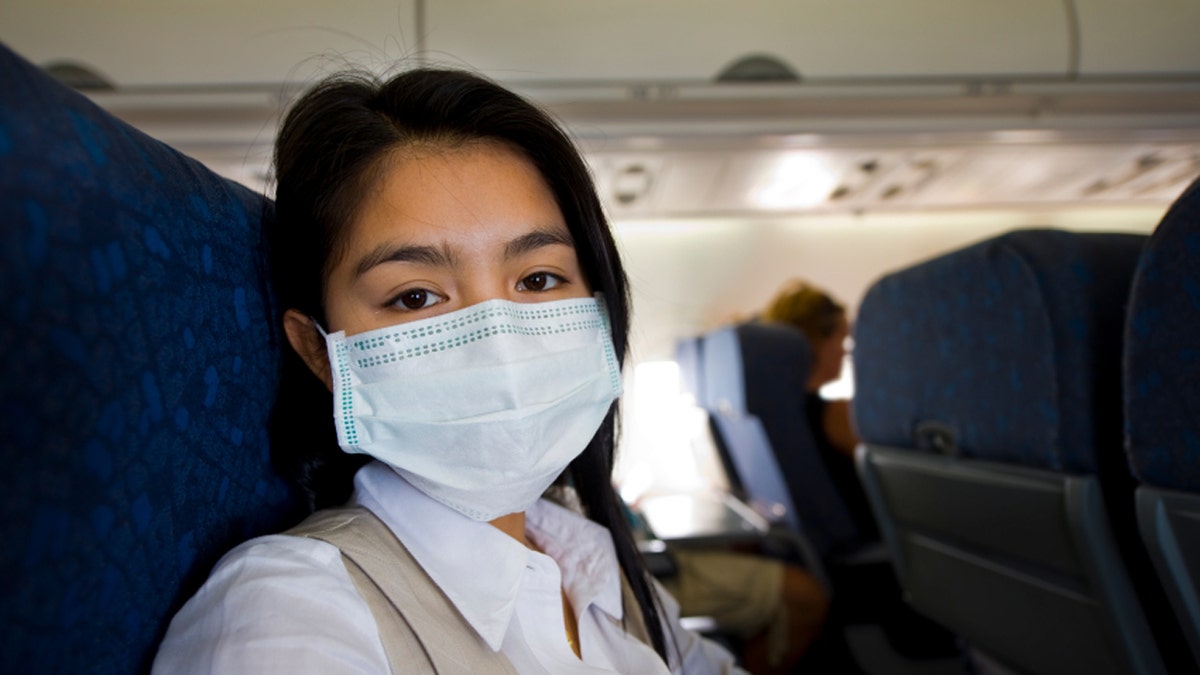
Wearing a mask may seem extreme but travelers encounter tons of germs while flying. (iStock)
Canadian student Raymond Wang won the world's largest high school science competition in May 2015 for inventing an air filtration system that would prevent pathogens from spreading in airplanes.
Three billion people travel on airplanes annually, and illnesses such as influenza, SARS, Ebola, and meningococcal disease are passed from passenger to passenger due to airflow patterns in main cabins. The airflow is designed to move cyclically from top to bottom, but this spins contaminated air over and over again for everyone to breathe before it eventually reaches the exhaust and filter.
During his recent TED talk (watch it below), Wang shared a couple frightening stats: one man with H1N1 infected 17 people on a flight, while another with SARS infected 22 fellow passengers.
For his prize-winning air-filtration design, Wang used computer 3D simulations along with physics computations to create a working diagram of how germs circulate in the cabin after someone sneezes (watch it at 3:00 in the video below).
His solution?
An airway-filtering system that reduces the inhalation of pathogens by 55 times and increases the fresh-air delivery into the main cabin by 190 percent. Essentially, his design diverts the circulating air patterns by creating individual breathing zones for each passenger. Each sneeze is immediately eliminated and won't spread to neighbors.
More from Men's Journal
Wang said he was inspired to tackle the problem after he learned that not many people in the airline industry or government were actively working on ways to improve the quality of airplane air. The U.S. Environmental Protection Agency is at the helm of the Clean Air Act, but the law controls only air pollution from aircraft and monitors the impact of emissions from planes on the air quality outside the cabin.
Michael Plesniak, a fluid dynamicist and chairman of George Washington University's mechanical and aerospace engineering department in Washington, D.C., said in an Inside Science report that airplane ventilation systems are highly controlled and maintain good air quality by circulating cabin air through HEPA filters that remove germs and other pathogens. Plesniak's research found that vents in a plane's ceiling direct air out and down toward the floor below the windows, creating a swirling flow pattern within each row of seats that aims to keep contamination to a single row or, at worst, its next-row neighbors (still not ideal).
After an in-depth study published in Atmospheric Environment, he shared results that showed how people moving up and down the aisle of an airplane could disrupt the carefully designed airflow pattern from the plane's ceiling vents and spread infectious particles farther. This proves that the system in place is too delicate to work.
Now, to start the first steps towards guaranteed cleaner air in airplanes, Wang has to get aviation regulatory approval for his new design. He already has a patent, and it is reported that he is talking with both Boeing and Airbus SAS to help move the approval process along.
